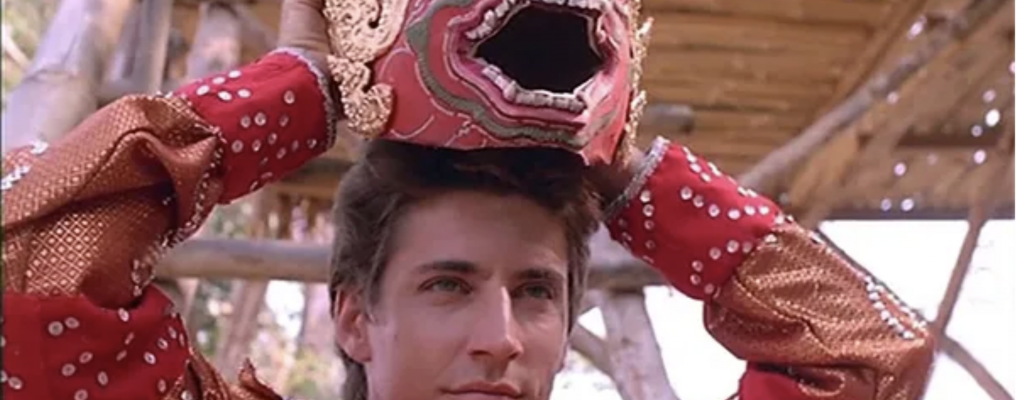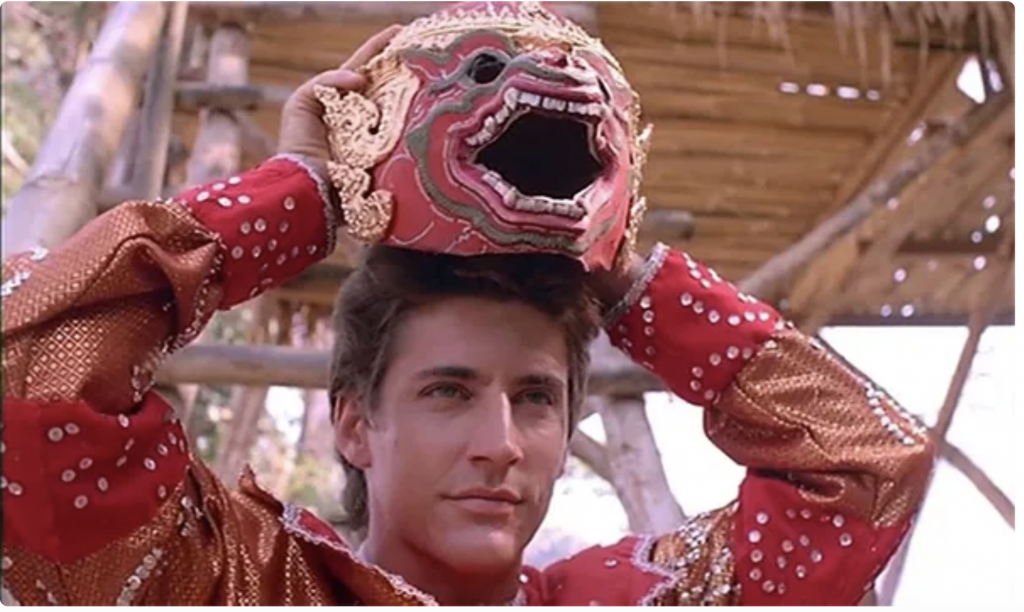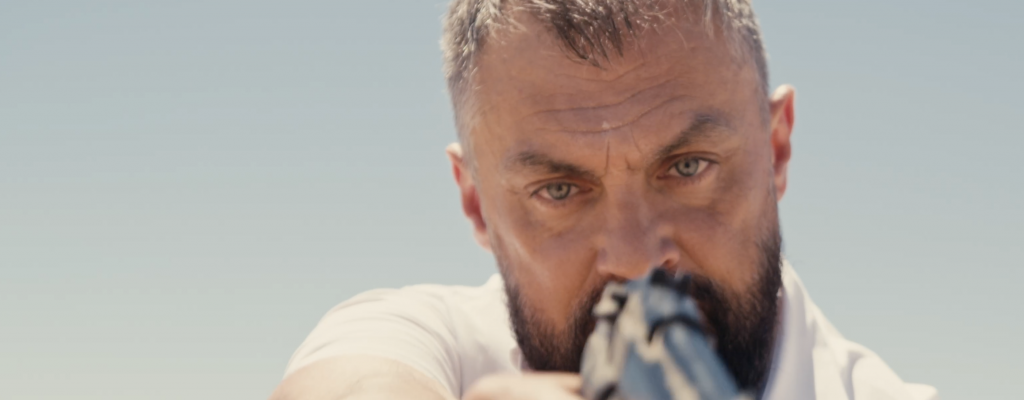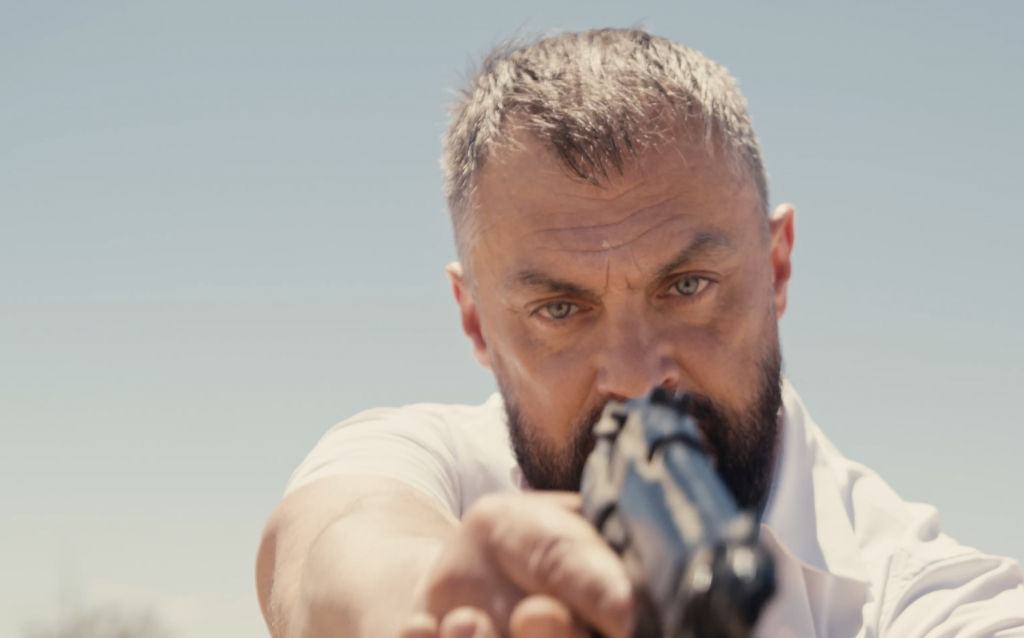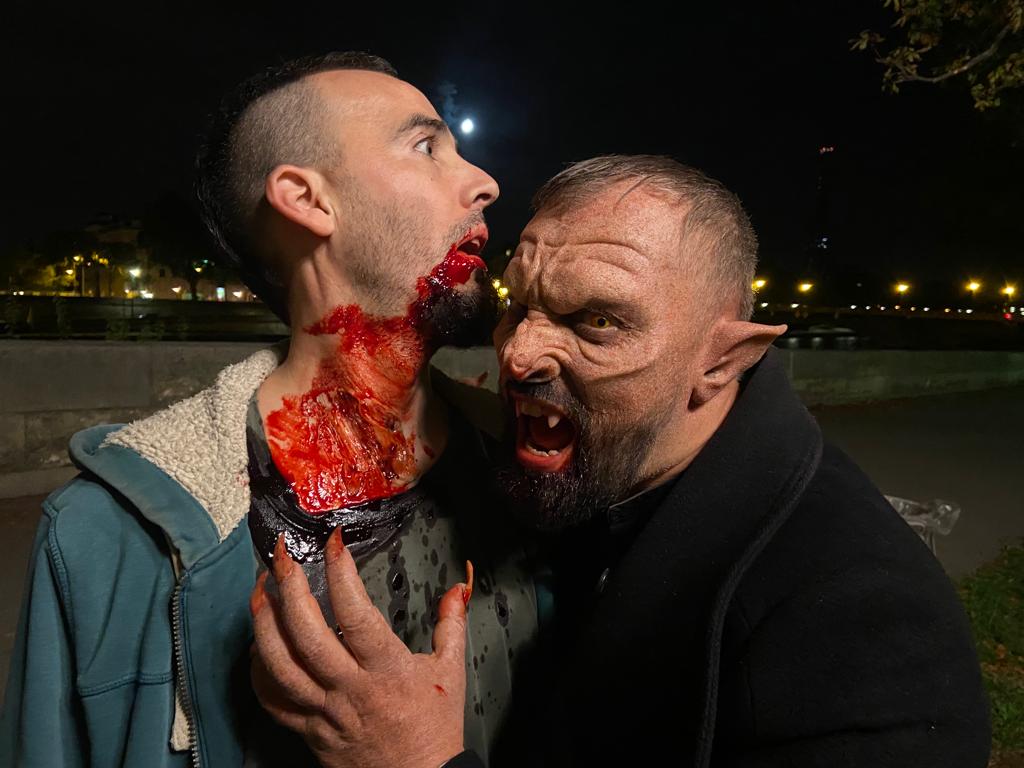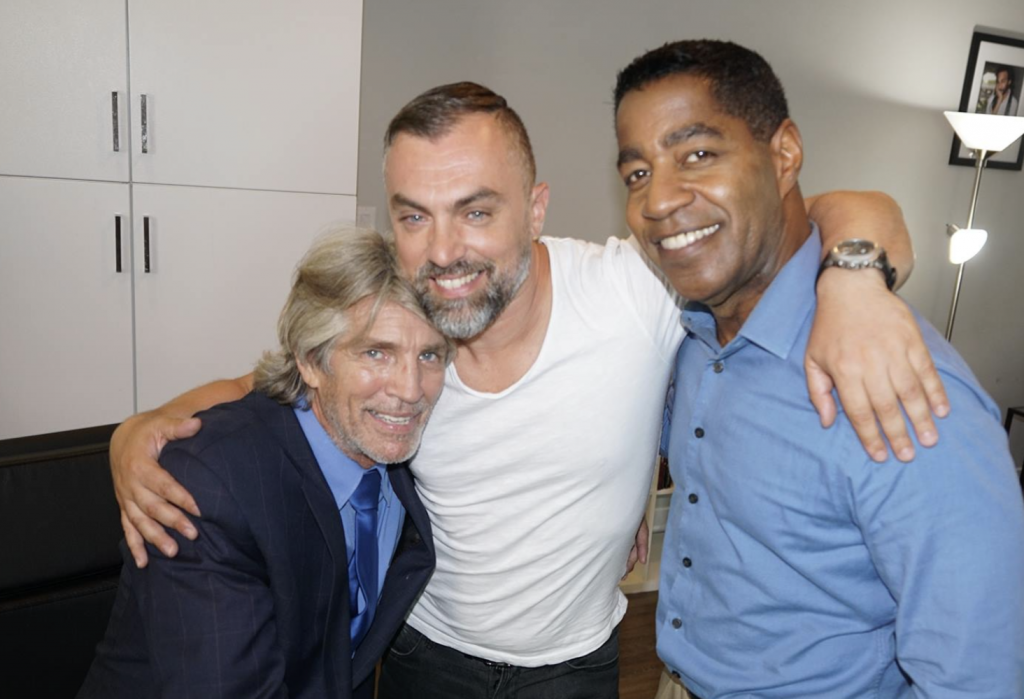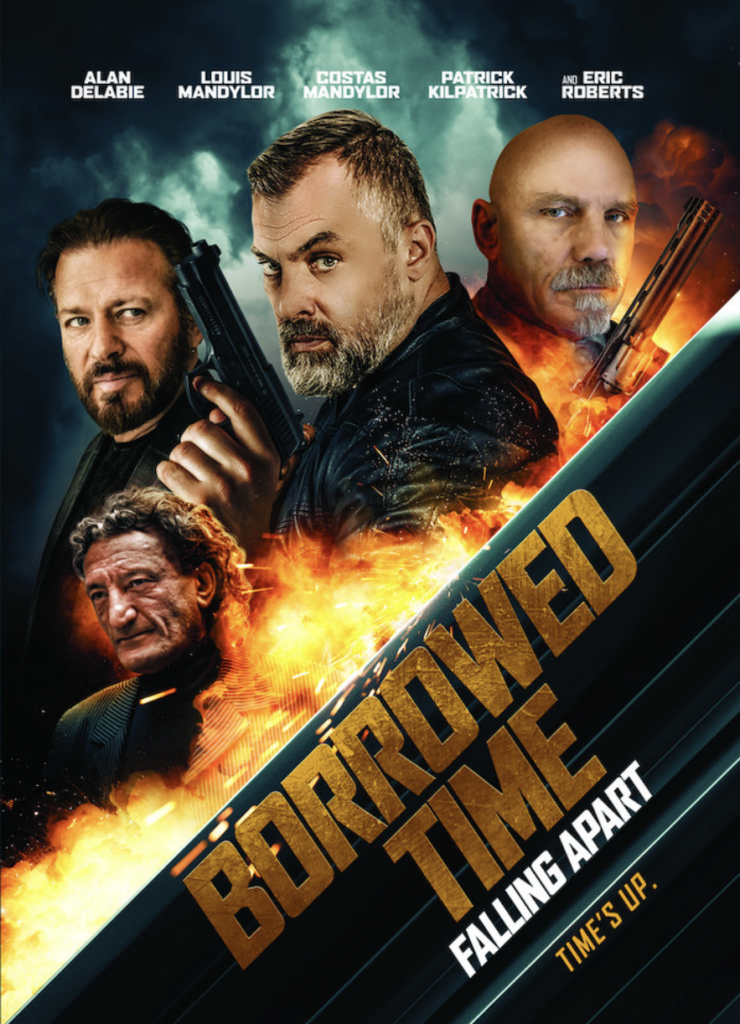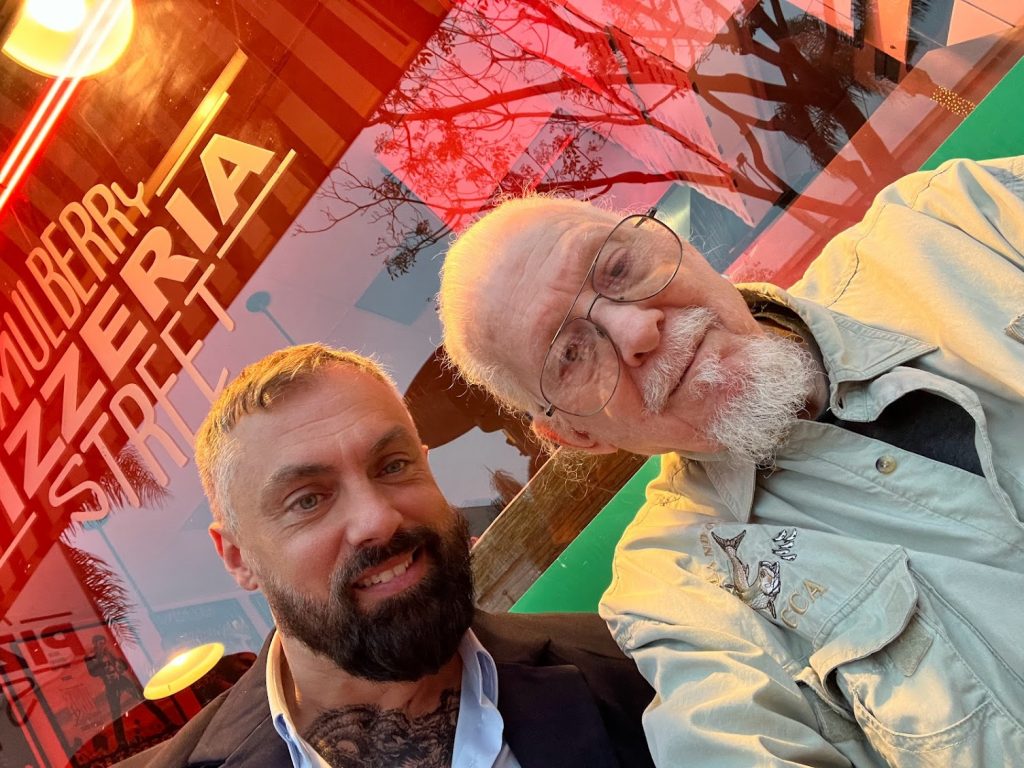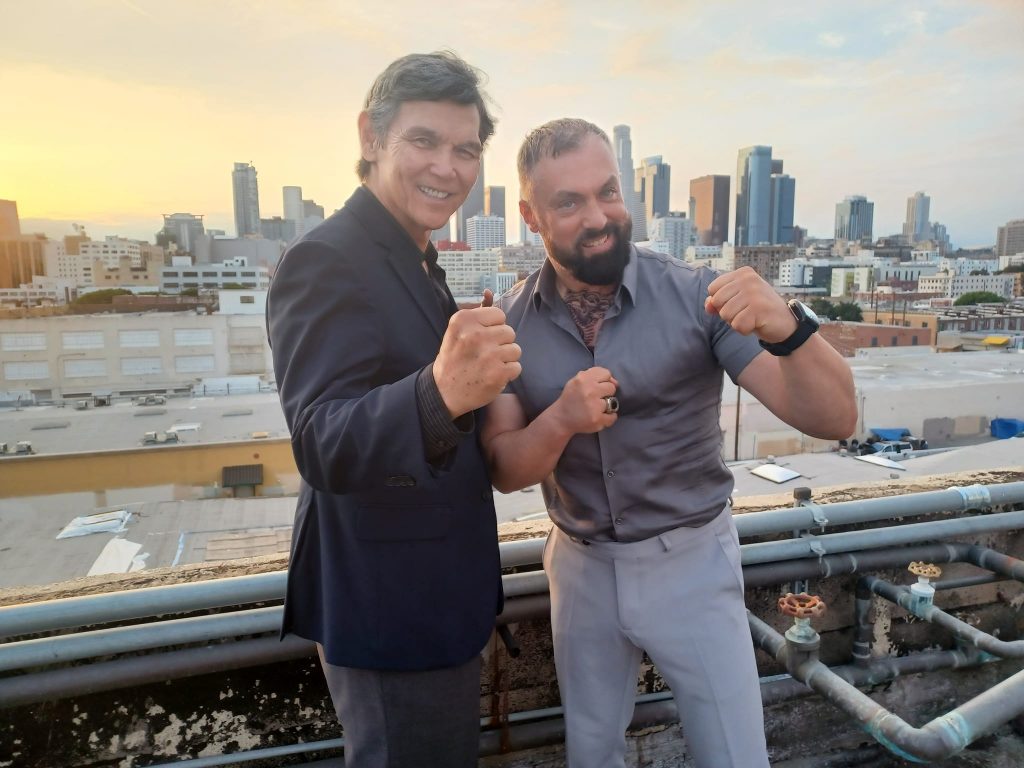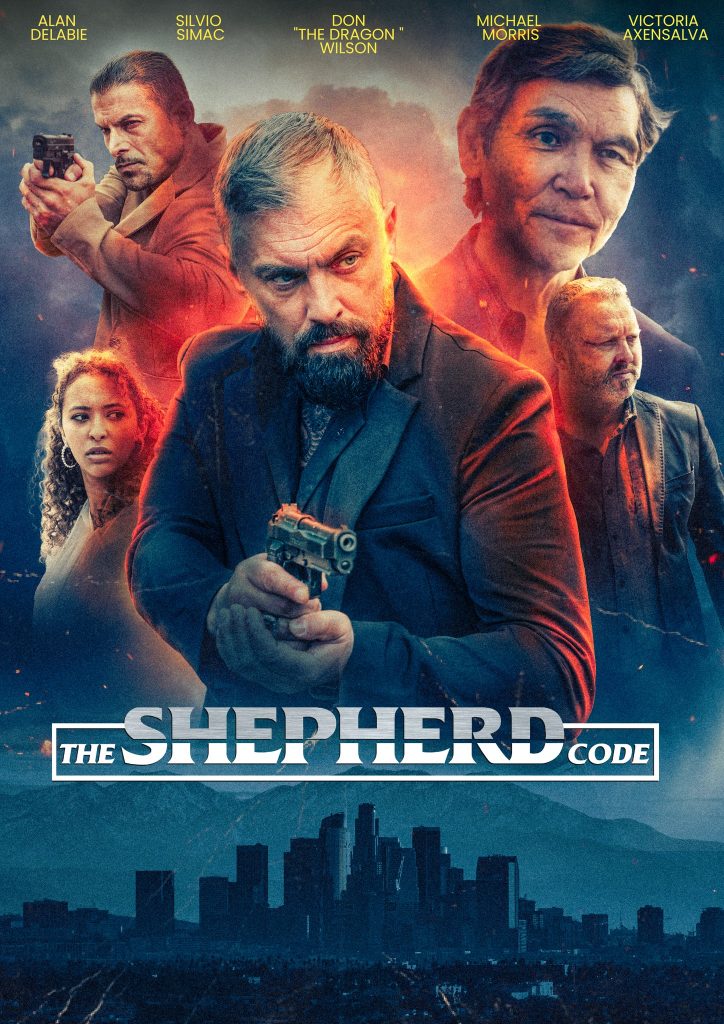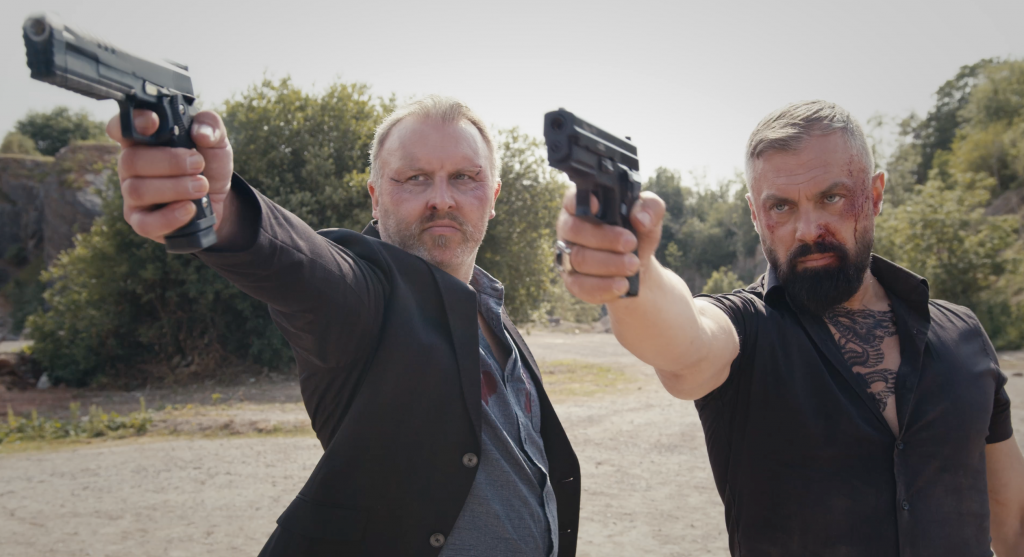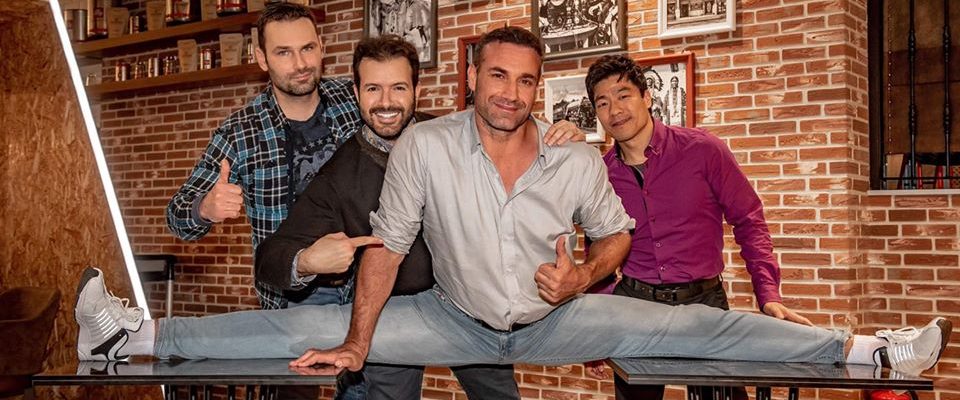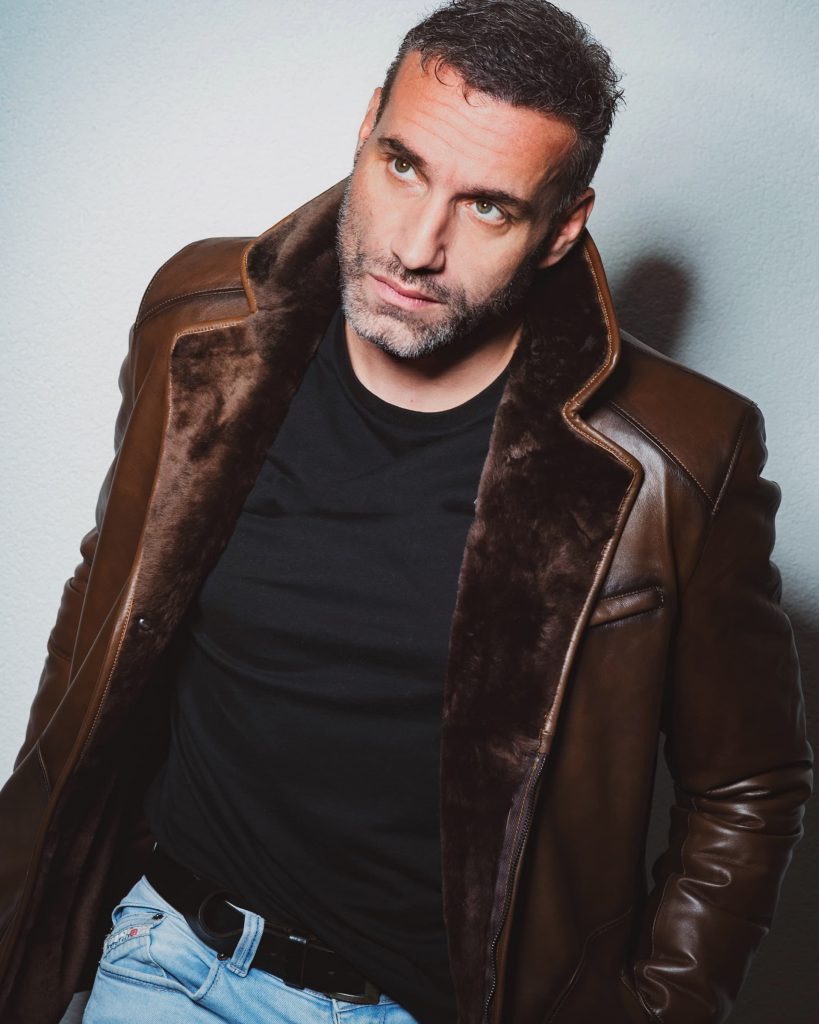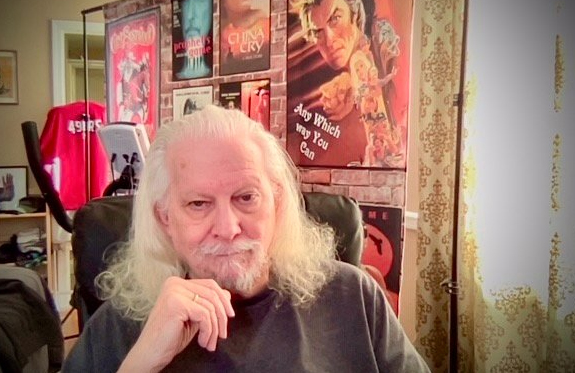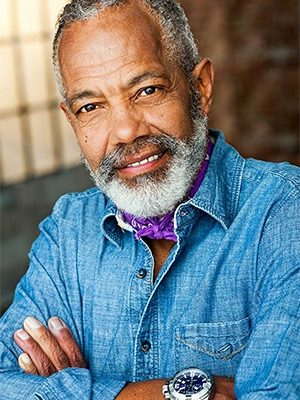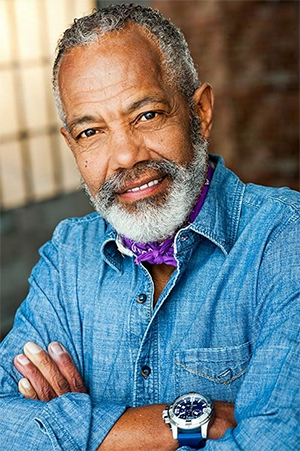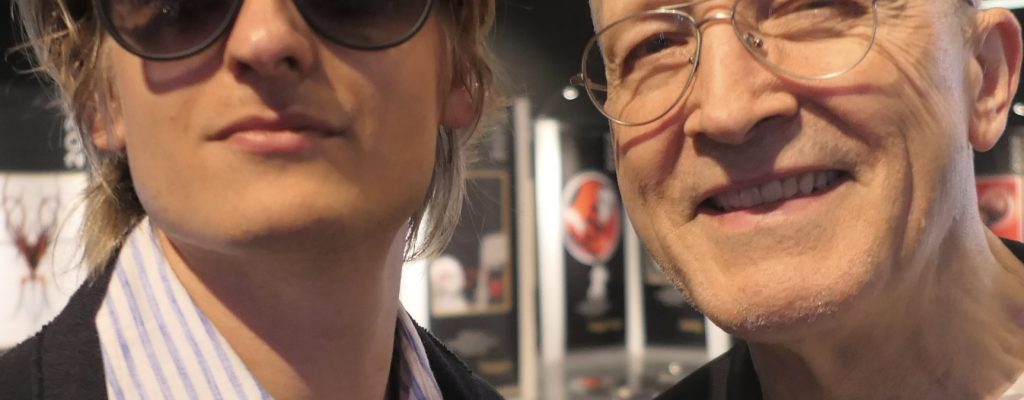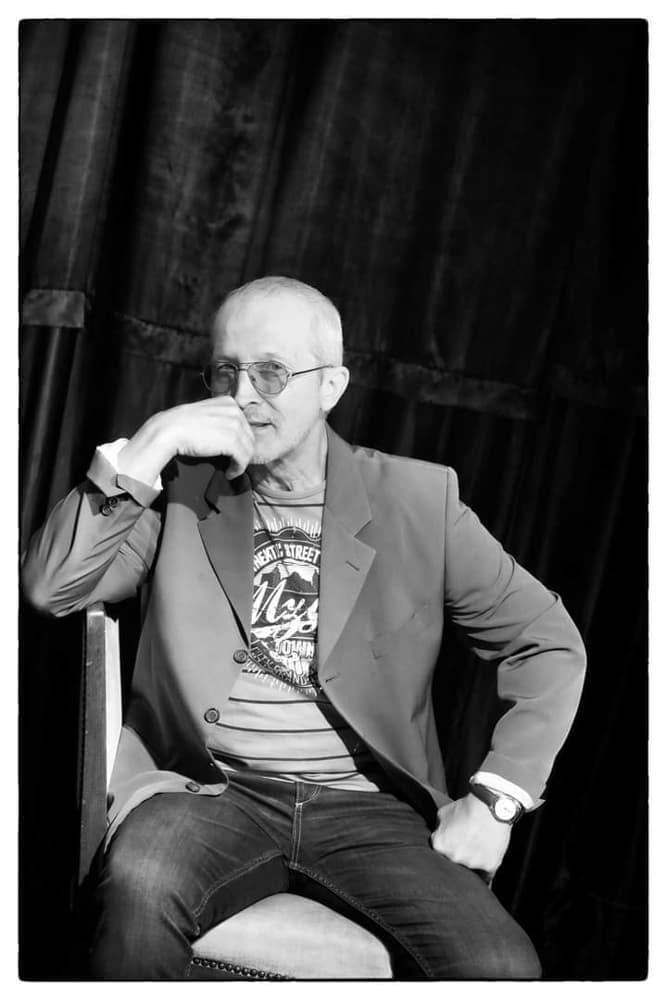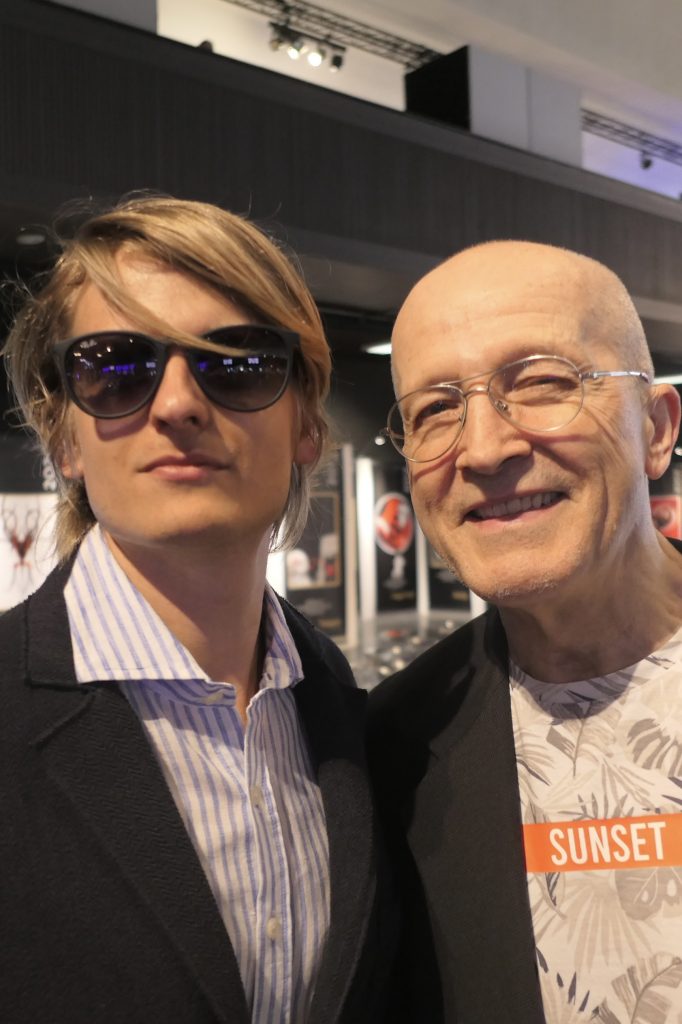Jose Luis Torres II is an American martial artist, actor, producer, and entrepreneur, holder of the 9th Dan in World Tang Soo Do and founder of NAFMA, promoting martial arts worldwide. Since 1982, he has taught Tang Soo Do at his karate school in New Jersey, which he has led for over twenty-five years. As an actor-producer, he is best known for his roles in the martial-arts thriller Killer Ex (2024), as well as in City of Honor and the upcoming Rise of the Dragon (2026).

Grégoire Canlorbe: How do you move from kinesiology to martial arts—and, in turn, from martial arts to action movie?
Jose Luis Torres II: I’ve practiced martial arts since I was five, competing and training throughout my childhood. Over the past forty years, martial arts have been my lifelong passion. When I went to Penn State University, I majored in kinesiology—the study of human movement—with the intention of becoming a chiropractor or physical therapist.
Despite my dedication to martial arts and kinesiology, I’d always harbored a dream of acting. In grade school and high school I performed in theater productions, and in college I even took two drama classes. Friends encouraged me to move to Los Angeles, but at the time I was focused on finishing my degree. Then life intervened: I married my college sweetheart, became a father, and built a career to support my family.
Over the next twenty-five years I stayed connected to the martial-arts world—making friends with its celebrities at seminars and expos. When the pandemic hit, I launched the Martial Arts Xperience podcast. With everyone stuck at home, I was able to book top martial artists for video interviews and quickly grew an audience of over 10,000 followers. Through the podcast I met my good friend William Christopher Ford (who played Dennis in The Karate Kid and reprised the role in Cobra Kai Season 6). He invited me onto his show 52 Masters and encouraged me to explore on-camera work. I submitted audition tapes and, though most went nowhere, one led to a role in Willie Johnson’s independent film 1 Out of 100. Filming in Maryland, I discovered how much I loved being on set.
Director Robert Parham saw potential in me and suggested we collaborate again. Later, at a fundraiser for the Martial Arts History Museum in Los Angeles, I pitched myself to indie filmmaker Jim Towns. I explained that modern action heroes don’t have to be bodybuilder–types but should feel real—like a “Puerto Rican Liam Neeson.” He agreed, sent me the script for Killer Ex, and cast me as a retired assassin drawn back into the field. The grassroots premiere in nearby Burlington, New Jersey, sold 514 tickets on opening night.
Now I’m developing my second project, City of Honor—a TV series whose pilot has been picked up by six streaming platforms. We’re currently finalizing investment to produce the entire first season. Martial arts taught me discipline; podcasting taught me persistence; and now, acting is teaching me that it’s never too late to chase a lifelong dream.
Grégoire Canlorbe: How does your training in kinesiology shape your eye as a martial artist?
Jose Luis Torres II: I’ve found that my background in kinesiology—understanding muscles, tendons, ranges of motion, and the fluid mechanics of movement—gives me, indeed, a sharper eye when performing. Some actors step in front of the camera and effortlessly look the part; I’m the kind who has to work for it. Knowing exactly how to execute a kick, open the hips, or coordinate a punch lets me elevate my martial-arts routines from mere imitation to authentic, camera-ready action.
By combining childhood passion with scientific insight, I’m not just an actor “trying” to fight—I’m a martial artist who knows instinctively how the body moves. That authenticity shows on screen: it doesn’t look like staged choreography, but real, dynamic combat. And while I’m still on my journey toward star-level roles, I’ve already seen audiences respond positively to that genuine fluidity and precision in my first projects—and it’s only the beginning.
Grégoire Canlorbe: When it comes to the way bodies are being hurt and shaken, how do you assess the fight scene in David Cronenberg’s Eastern Promises?
Jose Luis Torres II: I haven’t watched Eastern Promises in years, but its premise still grips me: a desperate race to rescue an infant from London’s Russian mafia underworld. You’re asking my take on the sauna fight scene featuring a naked Viggo Mortensen, right? I love how they shot it—raw, brutal, and unflinching. I don’t recall who was the stunt or fight coordinator, but the realism of that sequence is astounding. There are no 360° hook kicks or flashy flying sidekicks—instead you see instinctive, animalistic reactions, driven purely by emotion. Mortensen’s character fights with desperation and fury, using every instinct to save that girl.
Contrast that with Bloodsport’s highly choreographed displays of Jean-Claude Van Damme’s incredible kicking ability. In Bloodsport, the spectacle and precision of each move serve the tournament’s honor-bound stakes. In Eastern Promises, however, the violence feels organic: every punch and grapple reveals Mortensen’s character’s fear and determination. It’s a perfect example of how a fighter’s motivation—honor versus survival—shapes the way they move on screen.
Grégoire Canlorbe: Your character in Killer Ex is a retired professional killer who built a family. How did you get in his shoes so convincingly?
Jose Luis Torres II: It was actually my first time leading a film, so I didn’t shape the character as much as Jim Towns, our writer–director, did. Still, I found a lot to connect with. As a father of three boys myself, I understood the stakes of a dad doing whatever it takes to protect his family. And at nearly fifty, I knew what it felt like to move like I did in my twenties—stiffer, heavier, a little slower. Rather than hiding that, I leaned into it: my character in Killer Ex is past his prime, worn down by retirement and regret.
That weariness brought authenticity to the fight scenes. Early on, you’ll see him take worse hits—he’s rusty, out of shape, fighting on instinct rather than precision. But as the story unfolds and his mission sharpens (his son’s life is on the line), he locks in. By the final battles, his technique and focus have returned, driven by pure determination. In Killer Ex, the fights aren’t just choreography; they’re emotional milestones charting his journey from reluctant retiree to fierce protector.
Grégoire Canlorbe: The movie’s conclusion, which sees a dialog between Gerald Okamura and you precede a voiceover, is full of tension.
Jose Luis Torres II: It was funny, because in the original edit—and the February screening—we didn’t have Victor’s voiceover at either the beginning or the end of the film. As a producer, I talked to Jim and said, “I really think we need to open and close the movie with Victor reflecting in voiceover.” I felt it was important—like putting a cover on the book, then the back of the book. Jim loved the idea, so we added it in post-production.
We’ll be doing the same thing for Killer Ex 2, which we start filming later this summer. Although we’ve already shot the restaurant scene where the family celebrates and comes together, the voiceover dialogue will be recorded afterward and woven in—way, way after the fact.
Grégoire Canlorbe: Killer Ex is built upon the duo that the male protagonist—your character—is forming with a femme fatale—Elena Churinova’s character. How did you get your complicity as co-actors?
Jose Luis Torres II: So, Elena was cast—as I said, I didn’t have full control over Killer Ex’s casting. That was handled by our writer–director, Jim Towns. Jim had worked with Elena Churinova on another project and thought she’d be a great fit for this film, so he tapped her for the role.
How was acting with her? It was really good. You know, I’ve heard horror stories and I’ve heard great stories—Elena is the latter. She’s a consummate professional and a genuinely wonderful person. To be honest, this was the first time I’d ever acted on screen opposite a leading lady. Elena had already done twenty or thirty films and loads of stunts, so she was completely at ease.
We did Zoom reads and table reads together to build rapport. I was nervous—very insecure about how I’d look and sound on camera—but Elena’s warmth and encouragement put me right at ease. She’s a phenomenal actress and an even more phenomenal human being.
Grégoire Canlorbe: One of the best fights in Killer Ex opposes Elena Churinova to Lawrence Walther. Please tell us about the filming and choreographing of this great confrontation, which violently ends in the toilet.
Jose Luis Torres II: We shot that fight scene in a single day at a rented roadside motel, which presented tight walls, narrow corridors, and awkwardly placed dressers. Lawrence Walther handled his assassin role; he’s a stunt performer with whom I’ve since formed such a strong bond that I cast him as the police chief in my series City of Honor. Although I served as fight coordinator, we brought in Manny Ayala—who’s worked on blockbusters like The Amazing Spider-Man 2—to consult and fine-tune the choreography.
A couple of days before shooting, Manny, Elena, and Lawrence rehearsed in my karate school using mats and mock-up dressers to nail the spacing and timing. Once we moved into the actual motel room, Manny’s expertise guided every punch, wall-bounce, and camera angle—Jim Towns shot it all handheld on a Blackmagic to capture that claustrophobic intensity. Manny also designed the dramatic glass break and the final, tongue-in-cheek moment when the toilet seat clocks the assassin, giving the scene a bit of comic relief at the end.
Grégoire Canlorbe: Just as epic, the fight opposing you to Mohammed “Michel” Qissi ends with you diving a knife into him. Please tell us about the backstage of this scene.
Jose Luis Torres II: I was such a fanboy to work with Mohammed Qissi. I’d met him on social media, and we started forming a friendship—he even appeared on my podcast, where I shared my dreams and aspirations. Later, he flew in as a special guest at my tournament, and that’s when our bond really grew. When I told him about my movie, he didn’t hesitate to help. I was truly honored—everyone knows Qissi’s story with Jean-Claude Van Damme, so working alongside someone of his experience and talent was incredibly humbling.
Despite my admiration, I refused to embarrass myself. With Elena I was nervous, but with Qissi I went all in: I tapped into my martial-arts confidence, discipline, and focus so I’d look good for both of us. And he matched that energy—he’s the ultimate professional.
Originally, we planned to shoot his fight scene that summer, but a scheduling conflict meant he couldn’t fly in from Germany until months later from Morocco. When he finally arrived, we had to choreograph everything on the spot. He wanted a heavier boxing element; I wanted to showcase a spinning hook kick—his height made that move especially striking—and we had a blast building it together.
During the stabbing scene, someone forgot to swap the metal blade for a rubber prop. Mohammed never broke character; he delivered full-force swings until the director finally called “cut.” When they realized the real weapon was still on set, I glanced at him, half panicked—but he just smiled and said, “When the director says action, it’s action. When he says cut, it’s cut.” I couldn’t stop laughing.
That knife-dive effect was shot tight on a corner, cutting between a rubber knife thrust and a close-up of a machete prop with practical blood drips. For a small-budget film, the result drew great praise, and I’m proud of what we achieved with limited resources.
Grégoire Canlorbe: You really had a blast working with Mohammed.
Jose Luis Torres II: Working with Mohammed was a dream come true—and I can’t wait to collaborate with him again on future projects.
Mohammed really opened doors for me—he introduced me to his contacts, including his cousin, Said Hamdaoui, who did an excellent job in his short scene in the club in The Last Kumite. Since then, I’ve been building those relationships and expanding my network.
I think The Last Kumite had some of its own difficulties, but it was a great film that truly paid homage to that ’80s-style flick. Obviously we would have loved to see more fighting—a bigger throwback to the original Bloodsport—but they did a very, very good job. It’s so difficult to make movies with tight budgets, time pressures, and all the constraints involved, so I commend everyone who managed to pull it together. I’m really happy for them.
Grégoire Canlorbe: The platonic, respectful relationship between Victor and Ayana is somewhat reminiscent of that between Ethan Hunt and Ilsa Faust in Mission Impossible: Rogue Nation.
Jose Luis Torres II: Mission Impossible taking inspiration from Killer Ex’s ideas? Ha, I wish!
Seriously, though, what really drives the film is the history between Elena’s character and Victor. They were once inseparable—a team on secret missions, jetting around the globe, and very much in love. But Victor longed for a home and a family, while Elena couldn’t imagine giving up the thrill of the field. That difference pulled them apart, yet their bond never truly broke.
In the story, you see Victor risk everything—even his own family’s safety—to rescue her. And critically, we never crossed the cliché of him betraying his wife. We wanted to walk that fine line: showing Elena and Victor’s deep, lingering affection without slipping into adultery. It was essential to keep their connection honorable, honoring both their past passion and Victor’s commitment to his family.
Grégoire Canlorbe: Speaking of Mission Impossible, did you get to watch the just released, eighth installment?
Jose Luis Torres II: I haven’t had a chance to see it yet—I’ve been completely tied up with filming, production, and marketing my current project, so it’s on my to-do list. I did, however, catch Michael B. Jordan’s film Sinners (the vampire movie), and I thought he did a fantastic job. It’s incredible what you can achieve with that kind of backing—and that’s exactly the level I’m working toward, so I can bring even more ambitious, magical moments to the screen.
Grégoire Canlorbe: Thank you for your time. Would you like to add a few words?
Jose Luis Torres II: I’m juggling three major projects right now. We’ve just finished filming City of Honor, a six-episode crime drama in which I play Detective Sergeant Dante Perez of the West End Task Force. The pilot lands June 27 on Prime, Tubi, Uplift TV, Filmzie, Fawesome TV, and TVEI, with additional platforms still signing on. Financiers and production companies are already lining up to continue the series—seasons 2 and 3 synopses are complete, and all of season 1’s scripts are locked. It’s an emotional ensemble piece about a single dad battling grief, alcoholism, and rising city crime, and I believe its layered storytelling will resonate both here and abroad.
This summer—August into September—I’ll be back in front of the camera for Killer Ex 2 with writer–director Jim Towns. We’re bringing back familiar faces and introducing two new villains: Silvio Simac (of Transporter and Unleashed) as Nikolai, and martial-arts legend Casanova Wong as a powerful Triad boss. Expect bigger characters, sharper choreography, and higher stakes as our hero faces a fresh wave of adversaries. Looking further ahead, I’m developing Rise of the Dragon, a feature film set to begin shooting in late 2025/early 2026. It’s a passion project—a love letter to classic martial-arts cinema that will deliver authentic fight sequences, gritty atmosphere, and the spirit of ’70s and ’80s kung-fu epics. It’s been an amazing year of building new worlds and characters, and I can’t wait to share these stories with audiences everywhere.
That conversation was originally published on BulletProof Action, in July 2025

